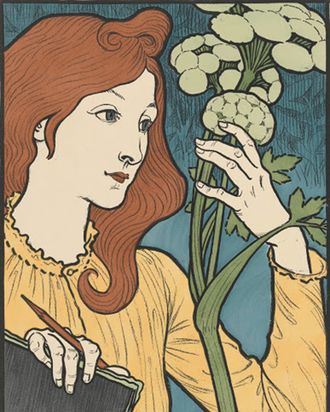
In 1891, the French painter Henri de Toulouse-Lautrec made his renowned print Moulin Rouge, La Goulue using only four colors: black, red, yellow, and white. The image, produced on lithograph paper, depicts the renowned cancan dancer La Goulue and her dance partner, Valentin Le Désossé, to create buzz for the Moulin Rouge, the Montmartre landmark once known for its beautiful young dancers and a guaranteed good time. The cabaret bar was frequently advertised in posters made by Toulouse-Lautrec at the time. He portrays La Goulue in a luxurious white coat, sporting the modern-day “top knot.” The starkness of her outerwear contrasts with the darker shading of her partner’s silhouette, which outlines a prominent top hat.
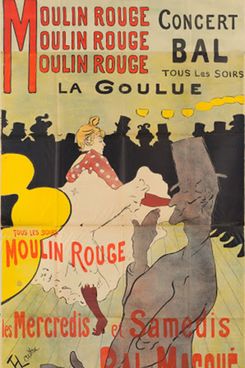
The prints of Toulouse-Lautrec and his avant-garde contemporary Pierre Bonnard are among many works featured in the new book Prints in Paris 1900: From Elite to the Street, by the Van Gogh Museum’s curator Fleur Roos Rosa De Carvalho. For artists in the 1890s, printing images on lithographic paper was a promising technique — it allowed for art to be produced faster and in greater quantities.
Pierre Bonnard turned to printmaking because of his appreciation of Japanese woodblock prints; his prints aimed to connect the elite and the fine arts with everyday and ordinary subjects. His subjects’ faces are painted in bright colors, whereas their clothing is set in deep-black ink with minor detailing, drawing the viewer’s eye to facial expressions. Many of his works playing with silhouettes appeared in the French art and literary journal La Revue Blanche, in 1894.
Prints in Paris 1900: From Elite to the Street is out now from Mercatorfonds, after a show at the Van Gogh Museum in Amsterdam that ended in June. The book is distributed in the U.S. and U.K. by Yale University Press.
If you buy something through our links, New York may earn an affiliate commission.
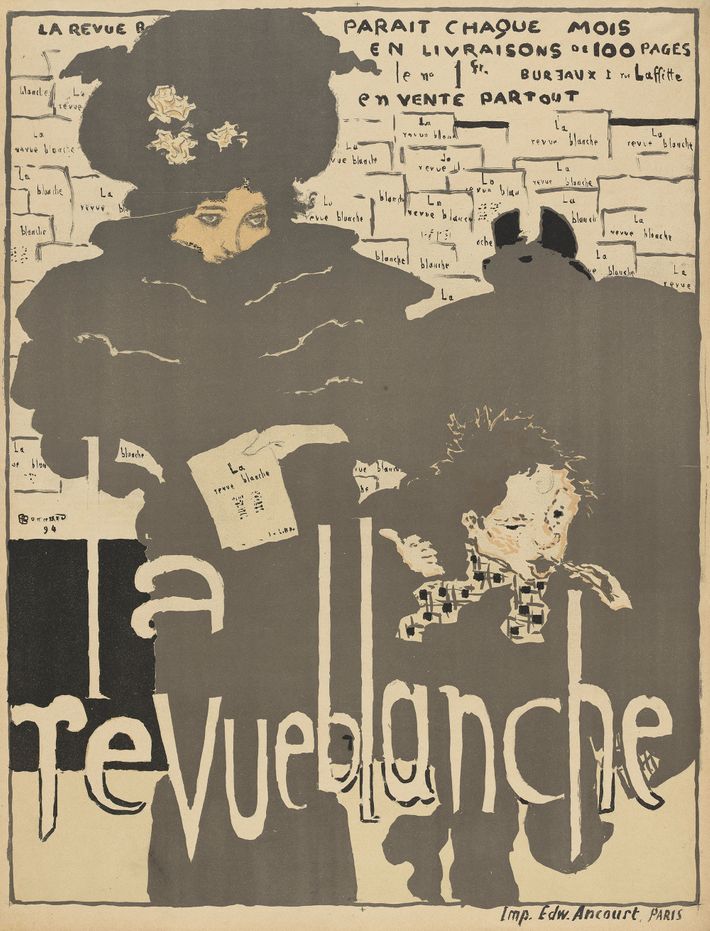
Pierre Bonnard, Poster for the journal La Revue blanche, 1894.
Colour lithograph on wove paper, 106.7 x 84 cm / 80.4 x 61.8 cm. Van Gogh Museum, Amsterdam (Vincent van Gogh Foundation).
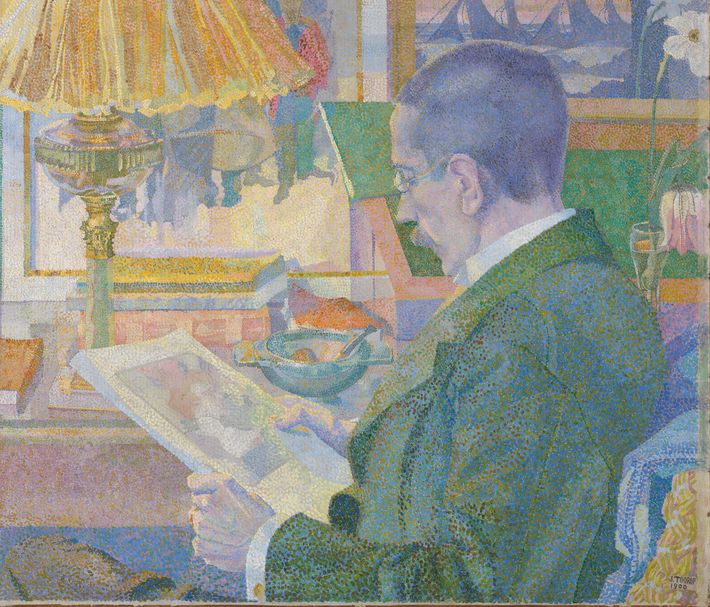
Jan Toorop, The Print Connoisseur (Dr. Aegidius Timmerman), 1897–1900.
Oil on canvas, 66.5 x 76 cm. Kröller-Müller Museum, Otterlo.
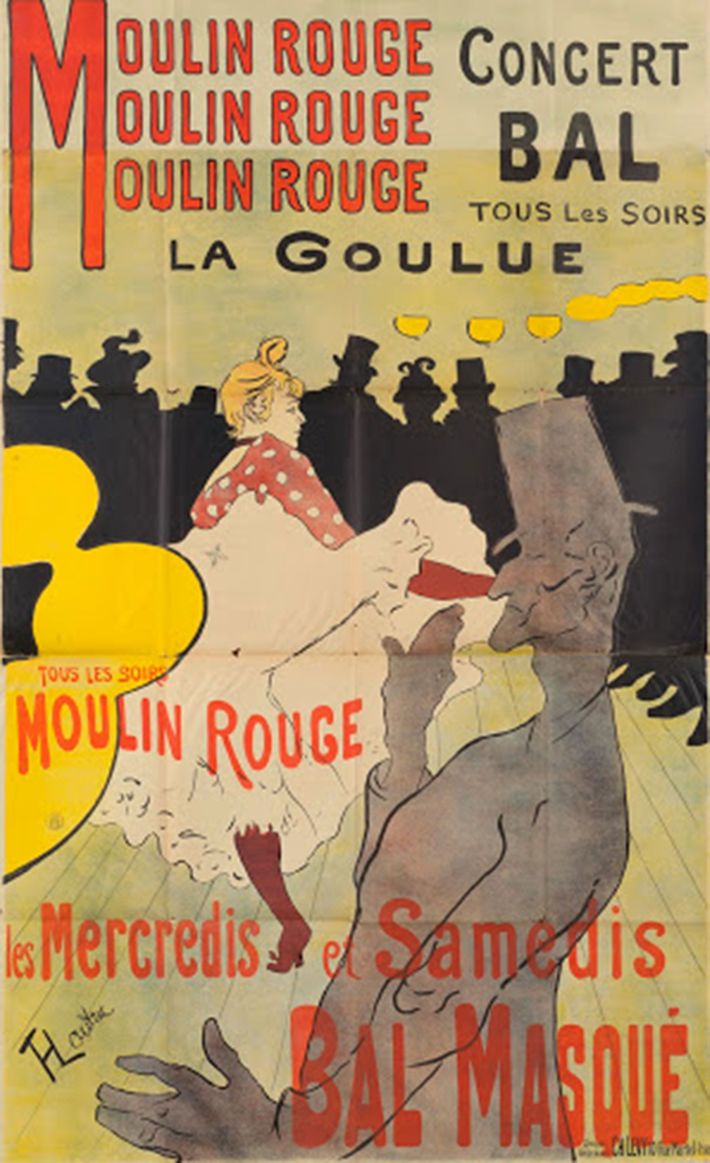
Henri de Toulouse-Lautrec, Moulin Rouge, La Goulue, poster for the dance hall Le Moulin Rouge, 1891.
Colour lithograph on wove paper, 207 x 132 cm / 201 x 123.5 cm. Van Gogh Museum, Amsterdam (State of the Netherlands).
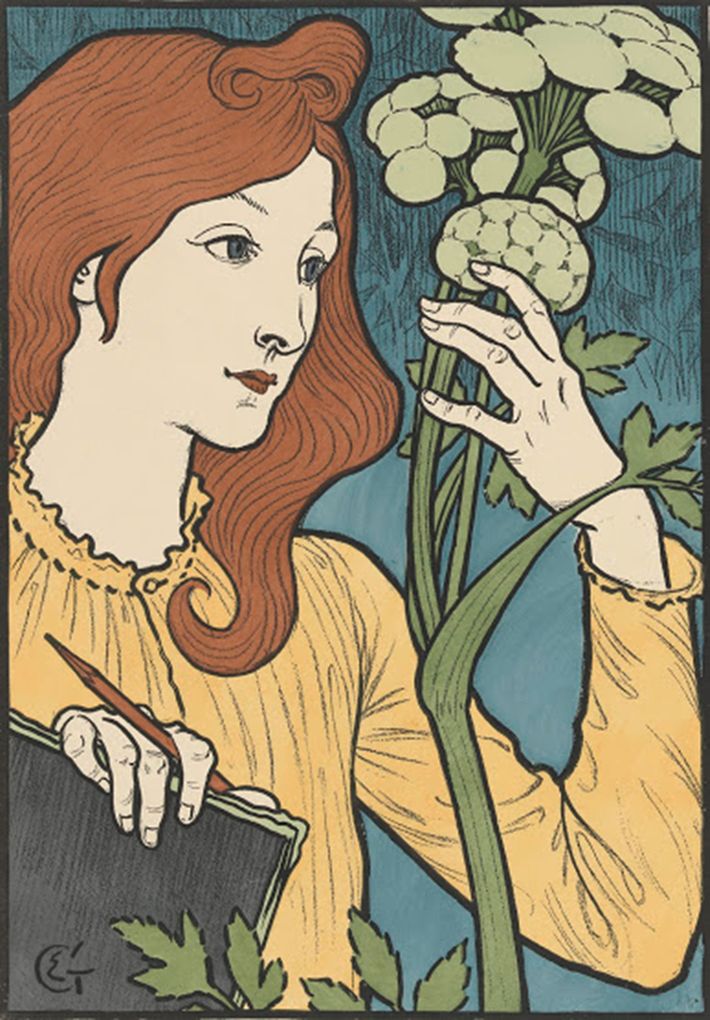
Eugène Grasset, Salon des Cent, 1894.
Photomechanical reproduction, stencilled with watercolour, on wove paper, 62 x 49.7 cm / 53.2 x 26 cm. Van Gogh Museum, Amsterdam (Vincent van Gogh Foundation).
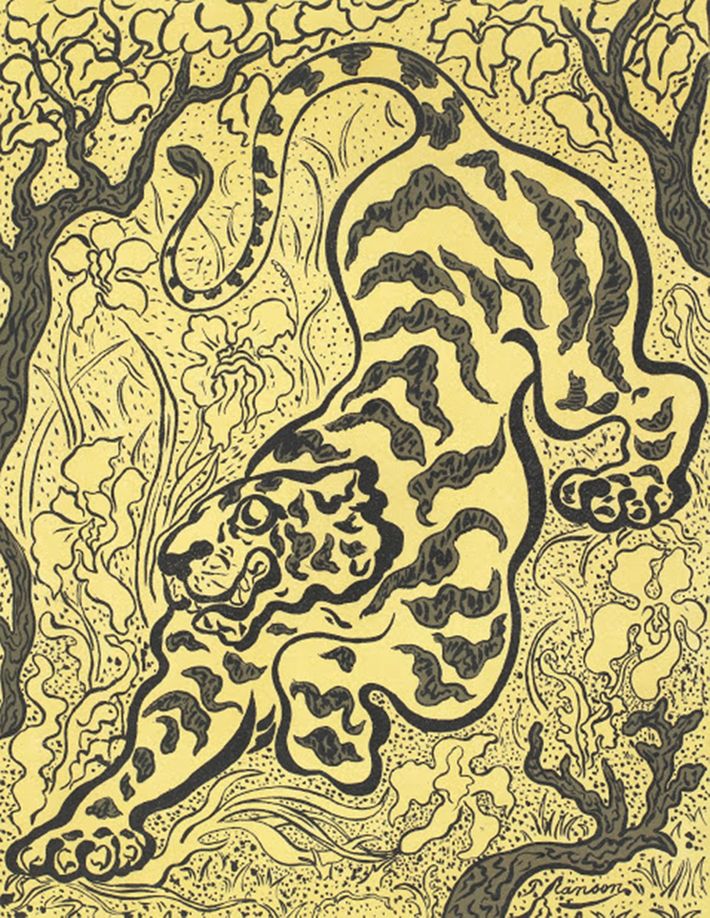
Paul Elie Ranson, Tiger in the Jungle from L’Estampe originale (Album I), 1893.
Colour lithograph on wove paper, 58.6 x 41.5 cm / 37 x 28.6 cm. Van Gogh Museum, Amsterdam (Vincent van Gogh Foundation).
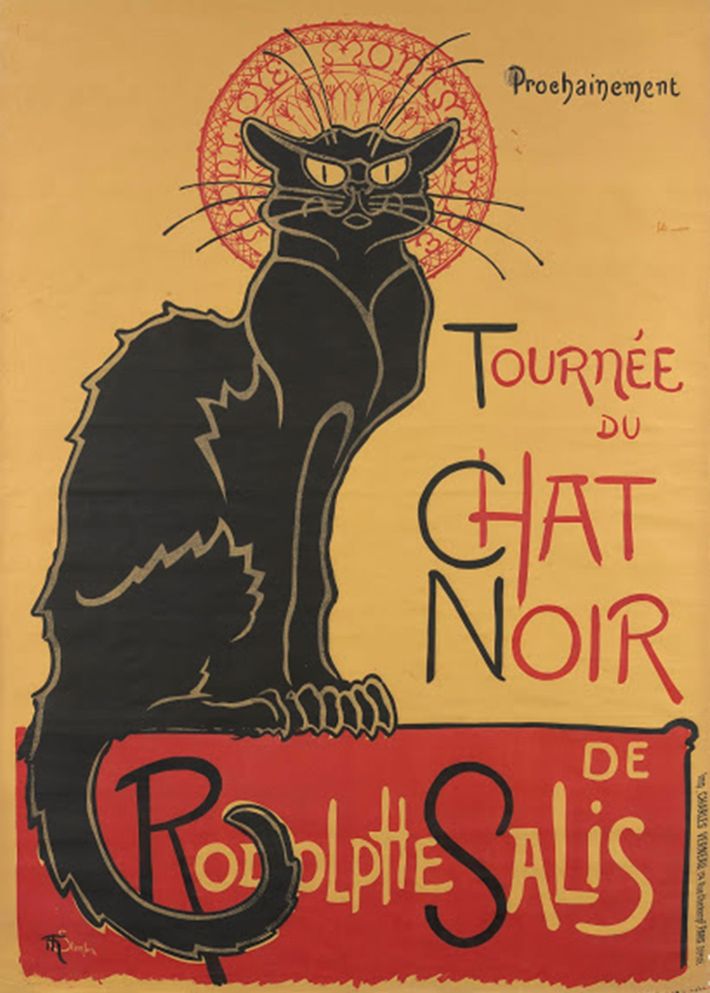
Théophile Alexandre Steinlen, Poster for the tour of Le Chat Noir, 1896.
Colour lithograph on wove paper, 146.5 x 108 cm / 140 x 100 cm.
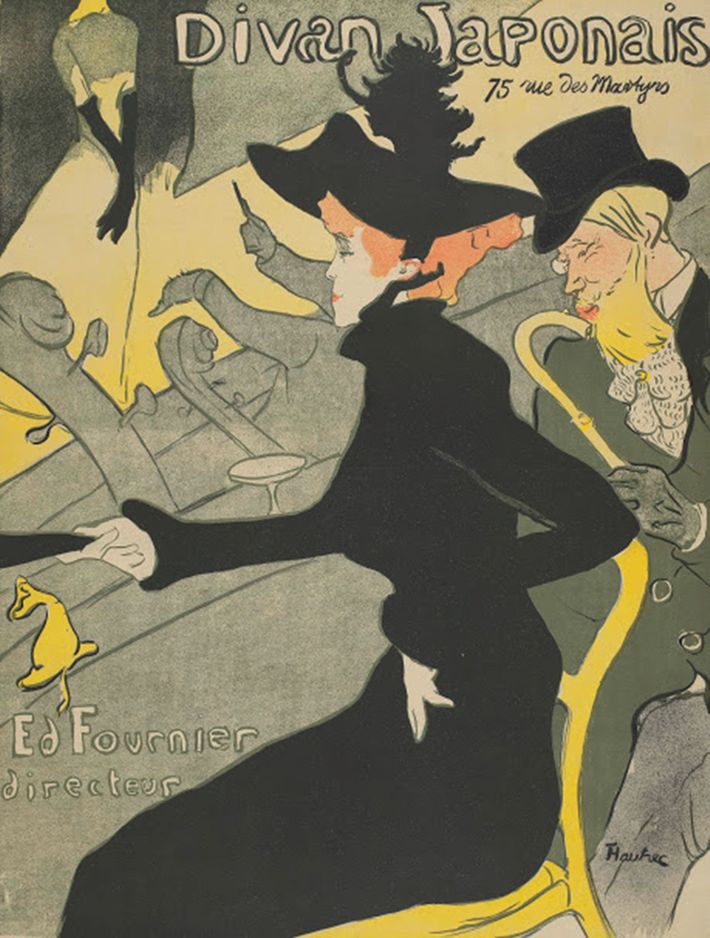
Henri de Toulouse-Lautrec, Poster for the café-concert Le Divan Japonais, 1893.
Colour lithograph on wove paper, 107 x 84 cm / 80.6 cm x 62.1 cm. Van Gogh Museum, Amsterdam (Vincent van Gogh Foundation).
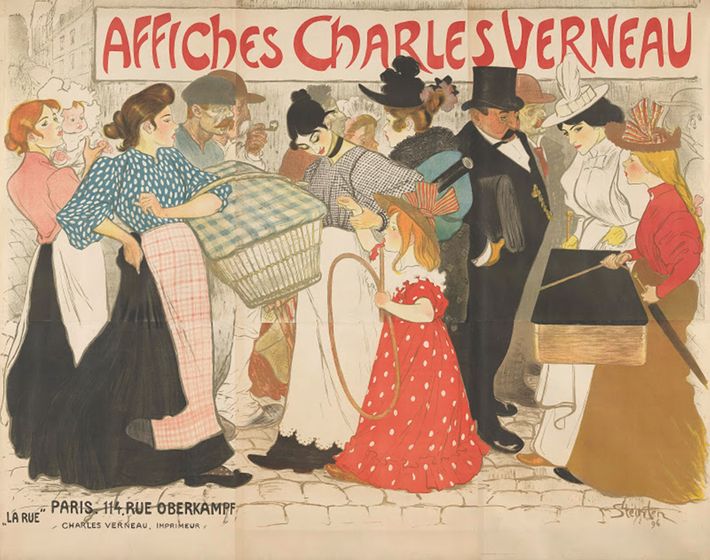
Théophile Alexandre Steinlen, The Street, poster for the printer Charles Verneau, 1896.
Colour lithograph on wove paper, 242 x 299 cm / 234.5 x 296 cm. Van Gogh Museum, Amsterdam (purchased with support from the BankGiro Loterij).
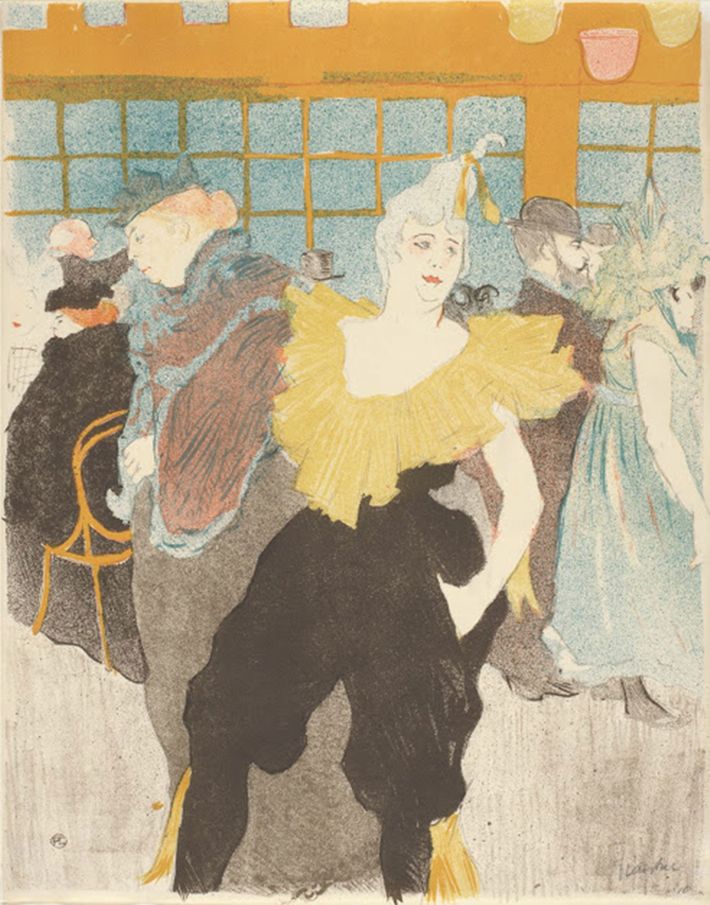
Henri de Toulouse-Lautrec, The Female Clown at Le Moulin Rouge, 1897.
Colour lithograph on wove paper, 41 x 32.3 cm. Van Gogh Museum, Amsterdam (Vincent van Gogh Foundation).




